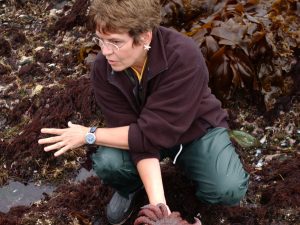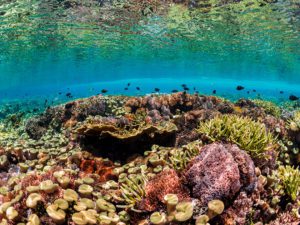Happy International Women’s Day! The United Nations is marking this day with the theme, “Women in leadership: Achieving an equal future in a COVID-19 world.” As people and organizations around the globe celebrate the tremendous efforts by women and girls in shaping a just and more equal future, Our Shared Seas is proud to recognize the heroines who fight every day to protect the health of the ocean and ensure everyone has equal access to the many benefits it brings.
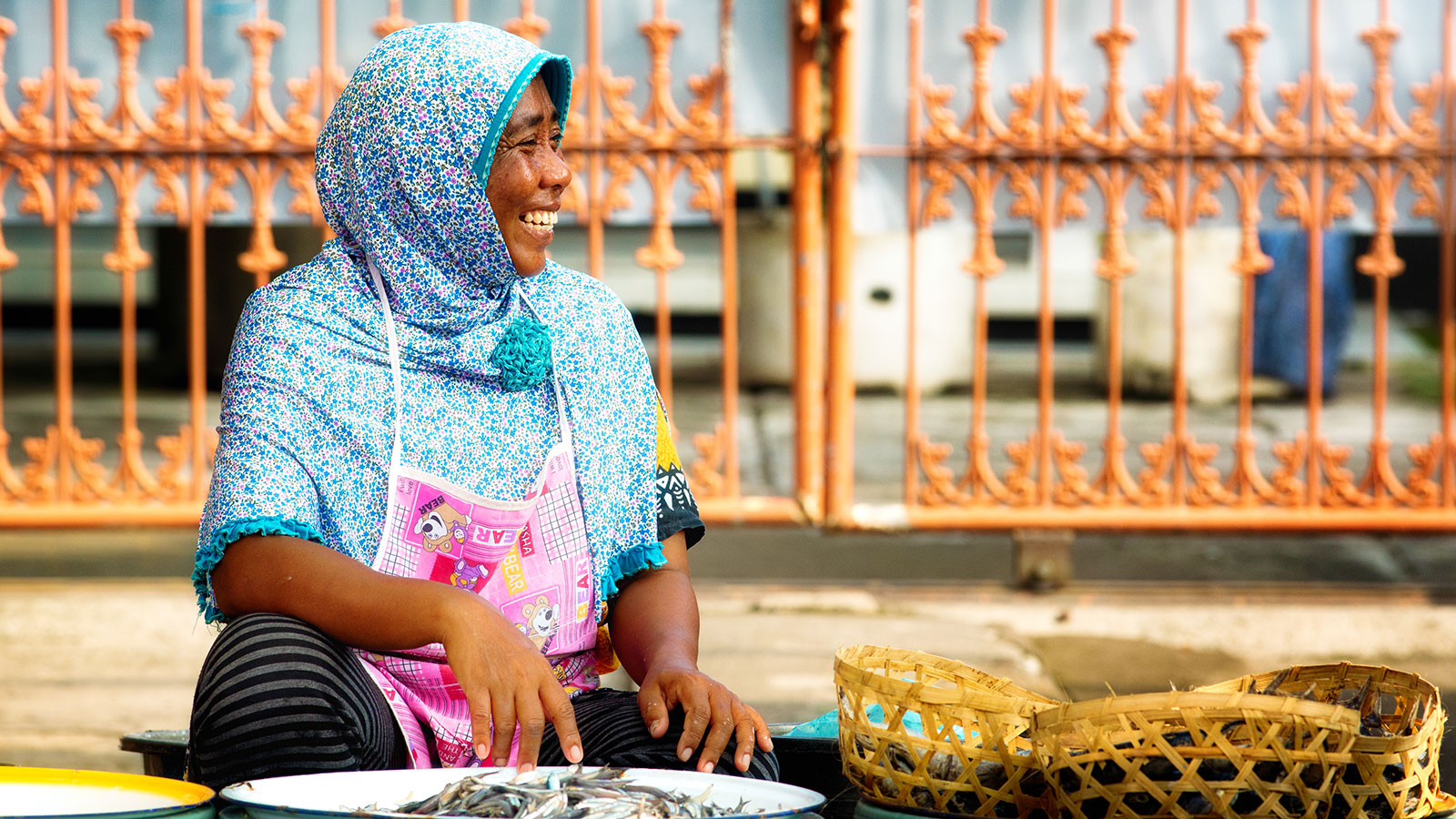
Indonesian fish market vendor. Photo: NicolasMcComber/iStock
From Elizabeth Maruma Mrema, Executive Secretary of the Convention on Biological Diversity, to incoming WTO Director-General Ngozi Okonjo-Iweala, to Gina McCarthy, National Climate Director, women are putting ocean conservation at the center of public and policy debate, in the United States and abroad. Our Shared Seas invites you to join us in celebrating International Women’s Day by learning a bit more about a few of the women leaders who are on the front lines of securing the health of our ocean.
Who is the ocean heroine who inspired you to pursue marine conservation and/or continues to influence your work today?
Dr. Stacy Jupiter, Melanesia Regional Director, Wildlife Conservation Society: I got my early start in marine science and conservation thanks to Dr. Maria Byrne, a professor at the University of Sydney, fellow of the Australian Academy of Sciences, and leading global expert on echinoderms. She is an ocean dynamo who showed me that it was possible, as a woman, to run her own lab, parent two active, young children, do exciting field research, and mentor green undergrads like me to write a publishable scientific paper from start to finish.
Jackie Savitz, Chief Policy Officer for North America, Oceana: The ocean heroine who inspired me to do this work was Rachel Carson. While she is most known for her work on pesticides, and her famous book Silent Spring, her earlier books, like The Sea Around Us, were about focusing on the ocean as a dominant feature of our planet, and one that must be protected. I knew and loved the ocean, so this was very plain to me even as a child.
But it was Carson’s recognition, which she made clear in Silent Spring, that we simply could not pump chemicals into our environment without consequences, and her persistence in fighting the powerful pesticide industry, even as she struggled with cancer, that most inspired me. For her, it was pesticides, but it applies equally to all the other chemicals, from endocrine disruptors to carbon dioxide and other greenhouse gasses, all of which we still struggle with today. It’s unfortunate that we couldn’t have learned a lesson sooner—and worse yet, that we still haven’t fully learned it. But if Rachel was here, she would definitely still be fighting to protect the planet and the ocean, so we must too.
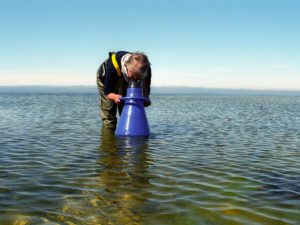
Scientist with aqua scope, Gotland island. Photo: MaslennikovUppsala/iStock
Julie Kuchepatov, Founding Director, SAGE (Seafood and Gender Equality): I have spent many years working to build environmental sustainability and social responsibility into global seafood supply chains. Much of my career before SAGE was spent working with Russian commercial salmon fisheries. Russian salmon is often sent to China for processing. I was fortunate to make a trip to Xingdao for a facilities tour and it was eye opening! In one facility, they had a “candling room.” Usually, candling is a process of shining a bright light into an egg to look at the contents, but in this case, candling was a process where two women stood opposite each other at a table in a dark room and shined a special light on the fish to find any parasites and then remove them with small tweezers. They conducted this procedure on every filet of salmon, even though these parasites are harmless and invisible to the naked eye. I never forgot these women, standing in the dark, plucking parasites out of fish.
It is estimated that 50% of people working in global seafood production are women. However, women are rarely included in leadership positions in the sector. Their voices, challenges, and vast knowledge are rarely incorporated into fisheries management decisions and project development.
My personal heroines are the hidden women behind global seafood production, like the ones in the candling room in Xingdao. There are estimates that, globally, up to 90% of the people working in seafood processing are women. These jobs are low paid, low skilled, dangerous, and the first to be affected when changes need to occur to meet the bottom line. SAGE was founded to uplift and amplify these voices. Illuminating the hidden—or IIU (Invisible, Ignored, Unrecognized)—women behind our seafood is what drives me every day.
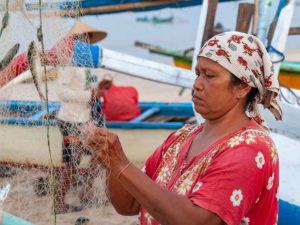
Balinese woman clearing a fishing net. Photo: Nicholas Pitt/iStock
Estradivari, PhD Candidate, Leibniz Centre for Tropical Marine Research (formerly WWF-Indonesia): I grew up listening to the eight decade-old popular Indonesia’s children folk song, “My Ancestors/Nenek Moyangku.” The lyrics are literally translated as, “My fore great-grandmothers are sailors, happy to wade through the ocean, crashing the waves are not afraid, taking a storm is normal…”
These lyrics carry a bold message: women play important roles in Indonesia’s maritime history and culture. This song drives my passion for exploring and discovering what lies around and beneath the ocean, and my need to take action to conserve our marine resources. My great-grandmothers proved that women could make changes, even when they faced the rough seas.
Dr. Madeleine McKinnon, Founder and Principal, Bright Impact: One of my ocean heroines is the natural resource economist Elinor Ostrom. In 2009, she became the first woman to win the Nobel Prize for Economics for her work on common pool resource management. Through her research into how groups manage natural resources like fisheries, she showed through a body of case studies the importance of property rights and, if empowered, how local communities can successfully manage their own resources. In my own work as an evaluator, her work inspires me in (at least) two ways: (1) the potential for scientific evidence to challenge conventional thinking, and (2) the importance of engaging users in decisions that affect their rights. As we look ahead to building a more inclusive ocean conservation community, Lin’s research gives us practical examples of how to involve more voices in an equitable and genuine way.
Dr. Samantha Cheng, Biodiversity Scientist, Center for Biodiversity and Conservation at AMNH: Starting out, I didn’t actually know anyone working in marine conservation, but I knew I loved the ocean from working at the New England Aquarium. Working with the scientists and volunteers there, I saw all the potential opportunities for engaging with the marine space and knew there was something there I wanted to delve into. But the women who inspired me to pursue science are my mom, Annie Cheng, who is a virologist at Beth Israel Lahey Health and has been working around the clock now for a year, leading the charge in COVID-19 testing—and my very close friend’s mom, Dr. Susan Lindquist, who was a trailblazer in protein-folding research. Growing up, these two women instilled in me the respect and wonder at the scientific process and the urge to always dig under the surface to not just understand that something worked—but how and why it worked.
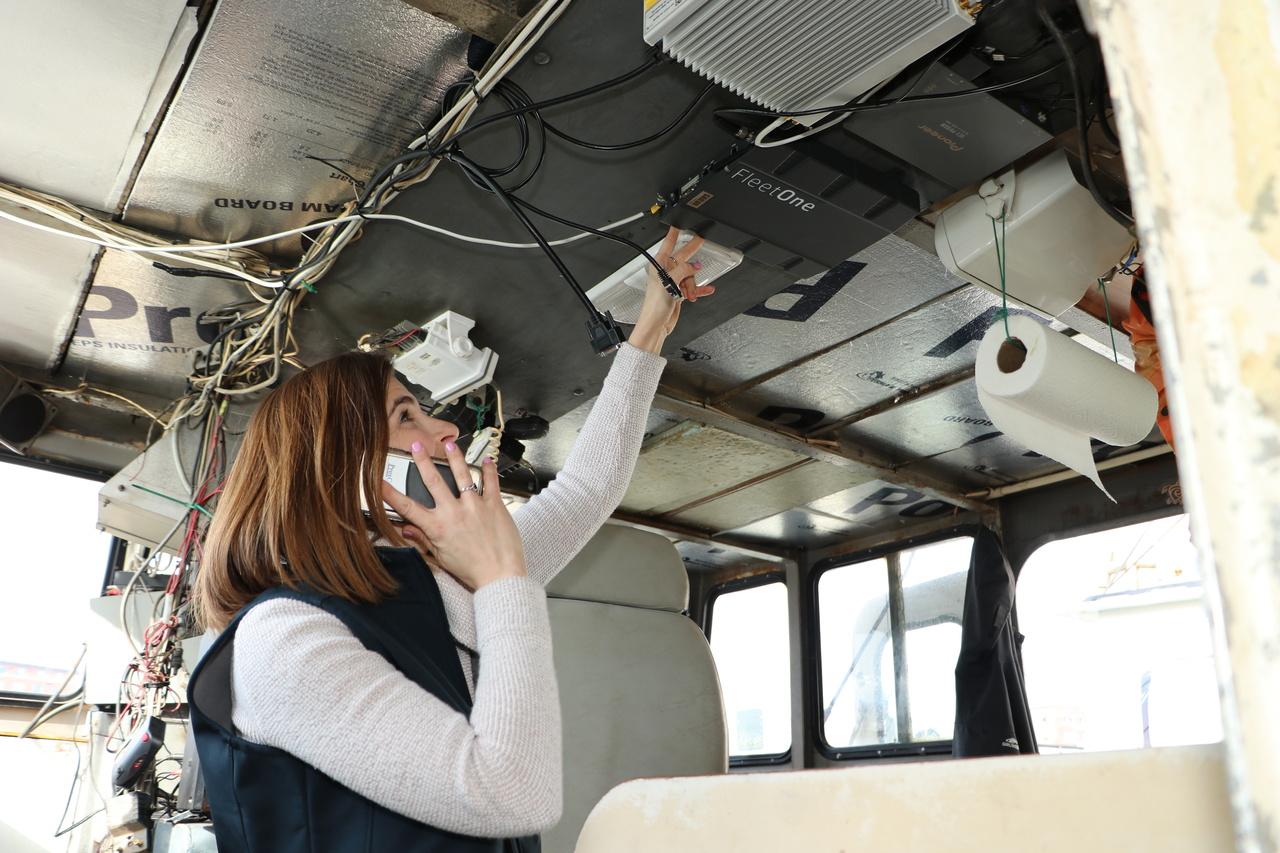
Heather Cronin working on electronic monitoring aboard a vessel, NOAA. Photo: NOAA
There are growing numbers of trailblazing women across all disciplines in marine conservation. What excites you the most about the movement right now? Where do you see bright spots?
Julie Packard, Executive Director, Monterey Bay Aquarium: I’m encouraged by the growth of the community-based conservation movement, because it’s starting to bring women’s voices forward. Women are key to driving conservation solutions that are equitable, effective, and bring most benefit to what people care most about – their families and communities. Only with this approach will we find conservation success. I’m proud that our team at Monterey Bay Aquarium and others are working to bring their voices and concerns forward. I’d especially like to give a shoutout to two incredible women: Fini Lovita, who’s doing great work to improve sustainability of fisheries and aquaculture in her native Indonesia; and Julie Kuchepatov, founder of SAGE, an organization working to advance women’s voices and gender equity in the seafood space.
Dr. Stacy Jupiter, Melanesia Regional Director, Wildlife Conservation Society: From where I sit in a developing country (Fiji), I found it inspiring to see the pain of racial tensions during 2020 turned around into positive momentum to put a spotlight on high-achieving women of color and women from developing countries in ocean conservation. They are all around us and invisible no more.
Dr. Samantha Cheng, Biodiversity Scientist, Center for Biodiversity and Conservation at AMNH: What is especially exciting to me is seeing the groundswell of action driven by women across the field to build communities of equitable practice and safe, open spaces for women of color to work, exchange, and grow together—in science and beyond. I especially want to recognize the work of three amazing scientists—Kelcie Chiquillo, Dr. Tiara Moore, and Dr. Camille Gaynus—who run A WOC Space that aims to build more positive and inclusive work environments for women of color in marine science.
Dr. Gabby Ahmadia, Director, Marine Conservation Science, Oceans, WWF: Women are tackling some of the hardest, most complex issues in ocean conservation right now. Sometimes you need support when you are pushing boundaries. What’s exciting is the growing underground movement in women’s professional networks that can help provide that validation to give you that extra boost or an invigorating conversation to move an idea forward. Perhaps I shouldn’t let the secret out?
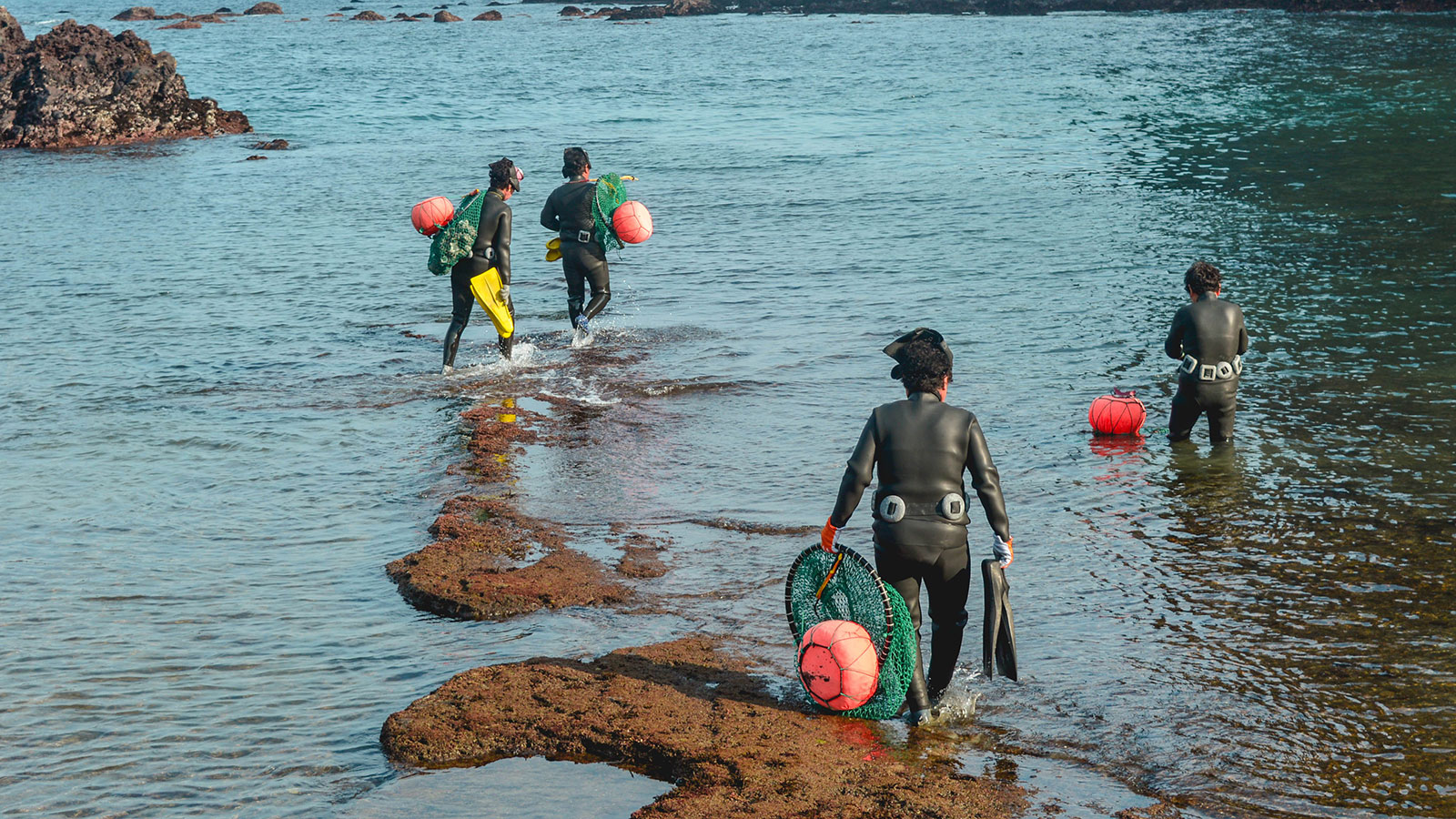
Jeju Island divers. Photo: Shanae Ennis-Melhado/iStock
As we celebrate International Women’s Day, what needs to happen to elevate and promote more female voices in the ocean conservation space?
Cecilia Blasco, Executive Director, Smartfish Rescate de Valor, AC: Conservation organizations need to do more to include and listen to female voices in the coastal communities where we work. While it is easier to reach community leaders, usually men, who have the power and confidence to speak up, we neglect to foster the meaningful participation of women in conservation projects, to the detriment of the outcomes our projects seek.
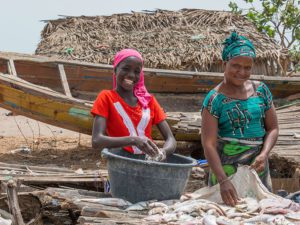
Women working drying fish, Gambia. Photo: Salvador-Aznar/iStock
Meg Caldwell, Deputy Director, Ocean, David and Lucile Packard Foundation: Listen to and amplify the wisdom of women and girls living and working in coastal communities whose livelihoods, traditions, food security, and/or spiritual well-being depend on a healthy ocean.
Janis Searles Jones, Chief Executive Officer, Ocean Conservancy: To make this field accessible to everyone, we need to take strong action. First, we need to acknowledge that experiences in ocean conservation are not the same for all women. Black, Indigenous, and women of color face compounding biases and racism that must be highlighted and addressed. It is dangerous to paint the issues facing “women in ocean conservation” with too broad a brush. We need to make sure that the voices of all women are heard, regardless of race, sexual orientation, gender identity, socio-economic status, and family status.
For women in this field, we need to lift and celebrate others as we climb. We are leaders in the field today because of the work of generations of women who came before us. It’s our responsibility to continue to open doors for the women who will come after us. For the men in this field, I urge you to stand alongside your female peers and continue to challenge the status quo, whether that is advocating for equal pay or calling out bias and harassment when you see it.

